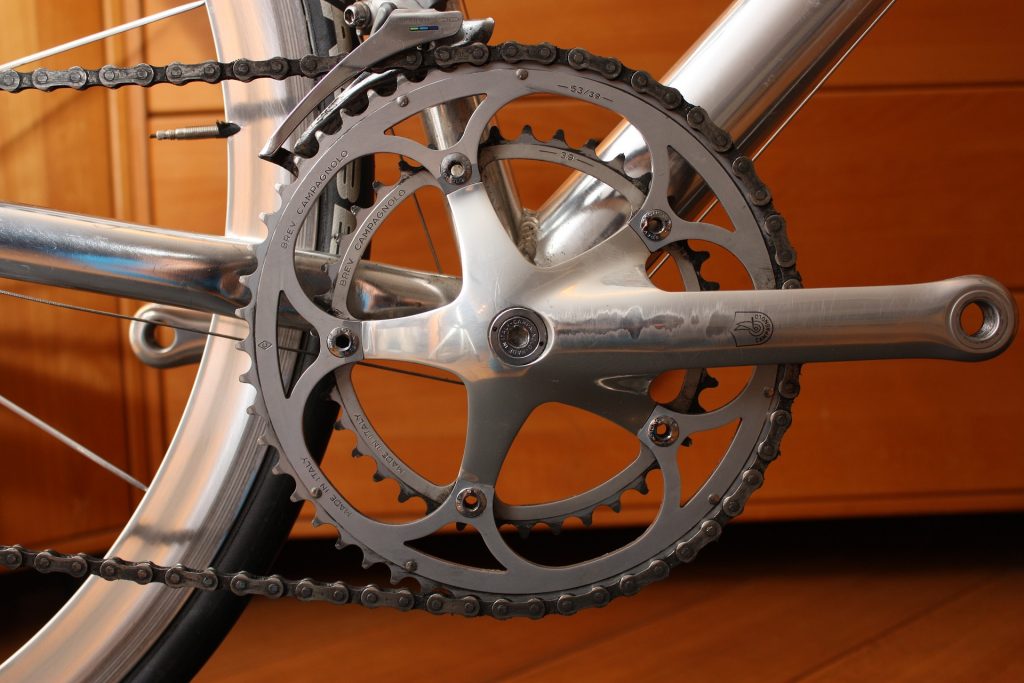Bike seat height – how to set The saddle height on Your bike
- Michael
- Last Updated August 27, 2023
We are a reader supported site. We earn commissions when you buy through links on our site. Learn more.
I’ve been riding bikes since I was 11 years old, and I’ve experienced the joy and freedom biking can provide. As I continued riding and learned more about bikes’ intricacies, I picked up some helpful knowledge to keep my rides fun and my body healthy.
Learning about picking the proper saddle height made a big difference as I progressed to mountain biking. This adjustment can help make biking a comfortable and enjoyable experience for anyone.
Here are the most important things to know when deciding how to set your bike seat height on a bicycle.
Read More: Bike Gears Explained – Shifting Gears For Beginners
What is Saddle Height?
Saddle height is the distance from the bike seat down to the bottom pedal when it is near its lowest position.
Several factors go into determining proper saddle height. But the main goal of finding your unique height is to prevent your knees from bending when the pedals reach their lowest point while also maintaining contact between your heel and the pedal.
To calculate the saddle height of a bike, measure from the center of the seat to the bottom pedal bracket. The bike seat height can be adjusted by raising or lowering the seat.
Why Saddle Height Matters
Finding the proper saddle height can provide numerous benefits. From providing support for longer rides to preventing injuries, saddle height plays a big role in your biking experience.
Longer, More Comfortable Rides
Like any exercise, biking puts a physical strain on the body, And just like lifting weights, having proper form can ensure a better, more efficient workout.
Having a proper saddle height can help you maintain endurance and give you more energy to push through until the end of a ride.
Feeling comfortable is one of the keys for an enjoyable bike riding experience. Making necessary adjustments to the saddle height will help in the short and long term.
Preventing Injuries
The other key aspect of finding the proper saddle height is injury prevention. When your seat is optimal, it can minimize the risk of injury while riding and prevent back, knee, and neck problems.
If the saddle position is too low, it could lead to compression injuries, affecting the back. If the position of the saddle height is too high, it can cause injuries to muscles from overstretching.
How to Know If Your Saddle Height Is Wrong
Knee pain can indicate your saddle height needs adjustment. If there is pain in the front of the knee, it typically means a low saddle height. Pain in the back points to a high saddle height.
The easiest way to determine if your saddle height is off its optimal spot is to sit on the bike and get a rough measurement. There are a couple of more straightforward indicators to show if your saddle height needs an adjustment.
Place your bike near a wall or a chair so you can balance without needing to pedal. Then extend one leg down to a pedal in its lowest position. If your knee is bent, the saddle height is too low. If your heel isn’t maintaining contact with the pedal, the height is too high.
By adjusting the height to give your heel a firm grip without a bent knee, you’ll put your saddle height much closer to its ideal position.
Ways to Determine Your Saddle Height
Using the standing method mentioned above will give you a rough estimate of the best saddle height for your bike. But there are more ways to get a more exact measurement once you’ve made that initial adjustment.
Several other techniques can then provide a more exact measurement of saddle height. Combining these methods will provide a more accurate saddle height.
The LeMond Method
The LeMond Method involves a little bit of math, but it was designed to provide the ideal saddle height.
To find the proper height, take an object, such as a ruler or level, and place it between your groins to mimic the effect of a saddle. Then measure your inseam by calculating the distance from your groin to the floor. Having someone help you is the easiest way to get an accurate measurement.
Once you have that measurement, multiply it by 0.883, and that will give you the ideal saddle height for your bike — in this case, the distance from the center of the bottom bracket to the saddle.
Your inseam measurement can also be multiplied by 1.09, which will give the saddle height from the bottom pedal in its lowest position to the top of the saddle.
Use an App

Several smartphone apps are designed to analyze motion and help determine the proper saddle height for a specific rider.
Having a stationary bike is an ideal way to use these apps, but putting a standard bike on a trainer and having a friend record your motions can also work.
Photos and videos can help analyze your knees’ bend to determine if your saddle height is too high or too low. You can try several positions and find one that feels most comfortable while riding, then use the analysis to make further tweaks.
Apps such as Hudl Technique, Saddle Adjust, and others can help bikers find an appropriate saddle height.
Other Factors to Consider When Determining Saddle Height
Finding the optimal saddle height isn’t the only thing to consider when maximizing comfort and minimizing injury risk while riding a bike. Several other factors go into setting up your bike, and they can vary from rider to rider.
Here are some other things to consider to maximize your comfort on your bike.
Saddle Fore/Aft Position
The positioning of the saddle’s fore/aft is the measurement between the seat and the handlebars. Where you position your seat affects how much strain is placed on different parts of your body.
With a lower fore/aft position, more strain is placed on your quads. As it goes farther back, more of that strain is transferred to your hamstrings.
Finding the right fore/aft position generally means determining the perfect spot to help both muscle groups share the bulk of the work. Fortunately, it’s relatively simple to find the right spot.
While sitting on the bike, place the pedals at the 9 o’clock and 3 o’clock positions, so they’re level. Your front knee should line up evenly with the front pedal.
The Fore/aft position can change over time, depending on your physique and riding level, so there’s no hard-and-fast rule for picking the best setting. But lining it up with this method and making adjustments from there is the best way to go.
Saddle Shape
On top of saddle height, having the proper saddle can make a big difference for any biker. Height won’t matter much if you’re not comfortable sitting on the saddle to begin with.
Choosing the right saddle shape and width comes down to personal preference, based on what provides the most support while sitting and riding.
Saddle Tilt
Once you’ve got a saddle that provides proper support while riding, determining the right level of tilt can add to your comfort level. The tilt of a saddle comes into play when you apply pressure to the seat.
If the saddle’s tilt is too high, it’s difficult for the saddle to provide the necessary support. If it’s too low, it can cause too much forward-leaning, and too much weight will be applied to your hands on the handlebar.
Most bikes have varying degrees of tilt, and it takes some trial and error to determine where you’re most comfortable. Take measurements with a manual level (or one on your smartphone), and remember where your ideal tilt lands.
Crank Length

A bike’s crank — the gear that moves the chain while pedaling — can come in different sizes. The larger the crank length, the longer each revolution of the pedals will be.
Crank length doesn’t necessarily impact output since riders typically use the same amount of energy.
Determining if your bike needs a larger or smaller crank length all comes down to comfort. For riders with lower saddle heights, a smaller crank will typically provide more comfort, and the same goes for higher saddle heights and longer crank lengths.
Conclusion
Determining your proper saddle height can take some time and multiple adjustments to get right. But once you do, your experience on a bike can improve for the long haul. You can ride for miles and miles knowing your body is in the best position to handle the task.
By finding your optimal bike seat height and making other adjustments to your bike, you can get the most out of riding with increased comfort and lowered risk of injury.

Michael
Hi, my name is Michael and I'm the chief editor of this website.
I've been riding all sorts of bikes for over a decade now and don't plan on stopping anytime soon.
Everyday, I learn new things and want to share my experiences with others.
Ready to join me on my journey?






